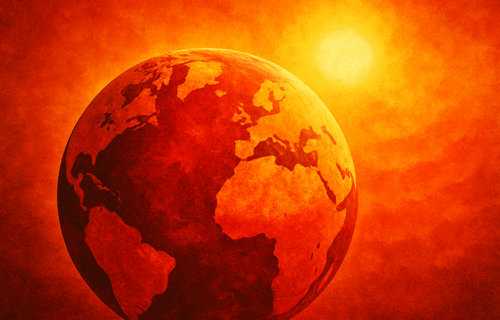A new international analysis warns that rising global temperatures are set to make extreme heat a far more common part of life for billions of people by the end of this century — with smaller and poorer nations expected to suffer the greatest effects.
The joint study, led by researchers from World Weather Attribution and Climate Central, projects that the world could experience almost two additional months of dangerous heat each year if current emission trends continue. These findings build on a decade of research linking human-driven warming to increasingly frequent and severe heat events.
While the Paris Agreement has helped slow the pace of global warming, scientists say its impact will not be enough to spare many regions from dangerous temperatures. Without the measures introduced under that accord, the planet would likely be heading toward a much higher level of warming and more than three extra months of extreme heat days annually.
The analysis, which draws on computer simulations and historical weather data from more than 200 countries, compares current patterns of extreme heat with projected scenarios for later this century. Under an expected rise of around 2.6 °C above preindustrial levels, the planet is forecast to gain roughly 57 additional days of abnormally high heat compared with present conditions.
If global emissions continue unchecked, pushing temperatures closer to 4 °C above preindustrial averages, the number of extreme heat days could double by 2100.
Scientists emphasise that the burden will not fall equally. According to the data, small island and coastal nations — including the Solomon Islands, Samoa, Panama and Indonesia — are likely to face the steepest rise in heat exposure despite contributing little to global emissions. For example, Panama could see more than four extra months of exceptionally hot weather each year, even though such nations together account for roughly 1 percent of the greenhouse gases currently in the atmosphere.
By contrast, the largest polluting countries — such as the United States, China and India — may experience only around three to four additional weeks of extreme heat annually, despite producing about 42 percent of the world’s carbon dioxide emissions.
The scientists describe this imbalance as one of the clearest demonstrations of climate inequality yet recorded. They warn that the growing disparity will deepen social and geopolitical divisions as heat waves place increasing pressure on food systems, infrastructure, and public health across the developing world.
Researchers also point out that since 2015, the planet has already seen an average increase of around 11 additional days of dangerous heat each year. This trend has intensified hospital admissions and fatalities linked to heat-related illness in many regions.
Recent events illustrate how rapidly these risks are rising. The heat wave that struck southern Europe in 2023, for example, was found to be about 70 percent more likely than it would have been before the Paris Agreement, and roughly 0.6 °C hotter than comparable events a decade earlier. Without stronger action to reduce emissions, scientists warn that by the end of the century, such heat waves could be several degrees hotter.
While the research has not yet undergone formal peer review, it uses methods widely accepted within climate attribution science. The findings reinforce conclusions drawn from earlier studies by the United Nations and national climate agencies — all indicating that human activity is now the decisive driver of the world’s accelerating heat extremes.
As one senior scientist involved in the work remarked, the outlook for many regions is painful but not hopeless: global efforts since 2015 have already prevented an even more severe trajectory. What remains, she said, is to ensure that momentum is not lost, and that wealthier nations help those least able to withstand what lies ahead.
